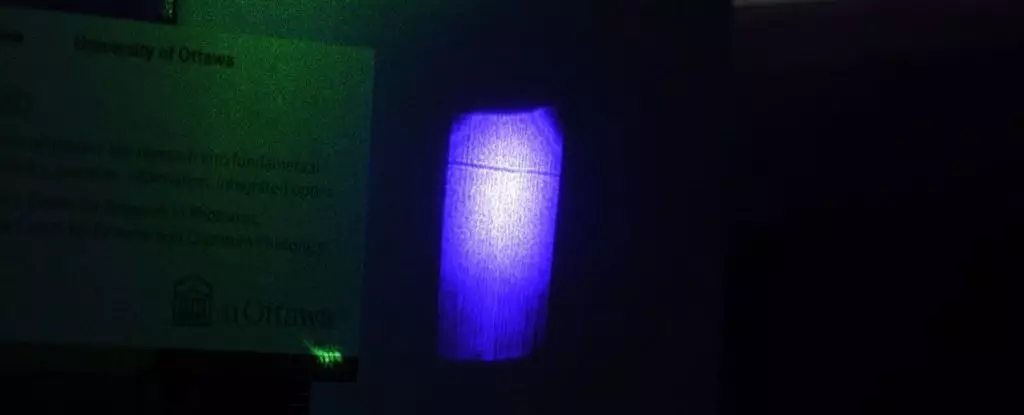Shadows are ubiquitous entities in our illuminated world, stemming from the basic principle that light cannot traverse through opaque materials. When illuminated, objects block the path of light, producing dark shapes or areas known as shadows. However, recent research has unraveled a surprising phenomenon that challenges our conventional understanding of shadows—specifically, how lasers can interact in a manner that seemingly allows them to cast shadows.
Traditional physics explains that photons, the particles of light, largely travel unobstructed unless they encounter an opaque object. In normal circumstances, if multiple light beams intersect, they continue on their respective paths as if they are uninfluenced by each other. It’s a straightforward manifestation of light’s properties that we’ve accepted without question. But physicist Raphael Abrahão and his team at Brookhaven National Laboratory took this fundamental understanding to an experimental frontier. They proposed that under very specific conditions, by introducing nonlinear materials into the laser system, a laser beam may effectively “cast” a shadow.
This concept diverges from the well-established principle of one beam overlapping another without interference. By employing nonlinear optics—where light interacts with materials in a non-linear fashion—Abrahão’s team sought to explore these interactions in greater depth, leading to impressive results and expanding the realm of photonics.
The experimental setup involved a ruby crystal, which is a prime candidate for studying such nonlinear properties. The researchers directed two lasers at the ruby: one blue and one green. The blue laser emitted light that passed seamlessly through the ruby. However, when the perpendicular green laser beam aligned correctly, the interactions between light and the ruby’s molecular structure kicked in. The phenomenon at play involved electrons within the ruby dancing in response to the green light’s presence, effectively obstructing the path of some blue light and creating a distinct dark line.
In a way, the green beam acted like a physical object, blocking portions of the incoming blue light and thereby forming a recognizable shadow. Unlike typical shadows that arise from physical objects, this instance could be considered a form of “shadow casting” by light itself—a notion that straddles the boundaries between light and matter.
This newfound shadow was not an abstract concept but rather a tangible phenomenon that could be observed directly. As the researchers adjusted the position of the green laser, the dark line moved correspondingly across the light from the blue laser, conforming to the contours of the screen that received the projected light. The visual evidence confirmed that, under these specific conditions, light itself had the capacity to produce shadows similarly to opaque objects.
Abrahão remarked on the implications of their findings, suggesting that this breakthrough offers a fresh perspective on the relationship between light and matter. This work not only enhances our understanding of optical phenomena but might also lead to innovative applications in fields such as telecommunications and laser technology.
The researchers’ efforts bring forward compelling questions about the nature of light and the intricate framework that governs its behavior. By illustrating that lasers can indeed exhibit shadow-like characteristics, the findings challenge long-held notions in physics, pushing the boundaries on how we perceive both light and shadows.
As our knowledge of the interplay between light and materials progresses, we could contemplate potential applications ranging from advanced imaging techniques to manipulation of light for various technological frameworks. Abrahão’s investigation is more than a mere curiosity; it is a stepping stone towards redefining how we might use light in ways that have yet to be fully realized.
The exploration of laser-induced shadows not only unveils the complexities of optical interactions but also broadens the horizon of scientific inquiry in photonics, heralding a new chapter in our understanding of the physical properties that shape our world.


Leave a Reply